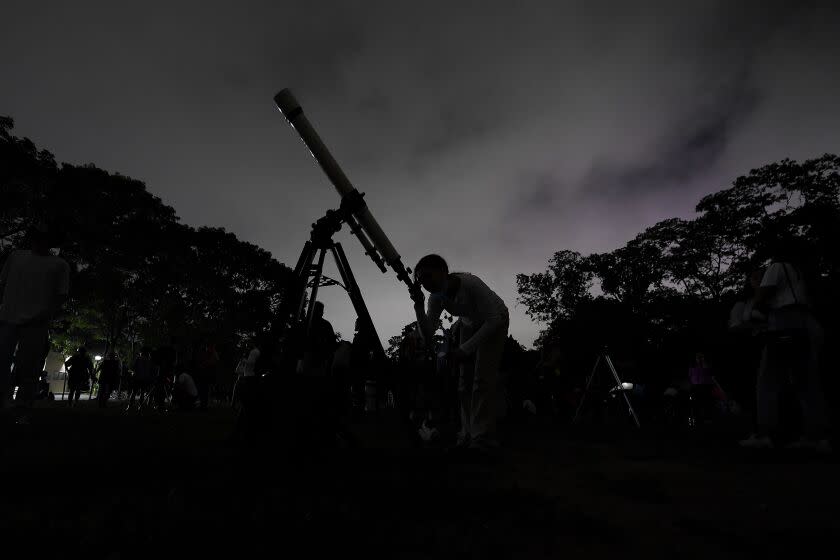Heads up: Five planets set to line up in night sky this week

- Oops!Something went wrong.Please try again later.
Astronomy buffs and others interested in pondering our place in the universe will get a special treat this week as five of our solar system's planets align for earthly viewing in the night sky.
The planets — Mercury, Jupiter, Venus, Uranus and Mars — will be visible from most everywhere on Earth with a westerly view of the sky, experts said, depending on cloud cover and surrounding light pollution.
The best time to catch the show will be just after sunset Tuesday — about 7:11 p.m. in Los Angeles — and the window will be small: Mercury will drop below the horizon not long after.
"With this planetary alignment, you can draw a line in the sky and look toward where the sun sets and see a relatively faint thing that looks like a star, and that will be the planet Mercury," said Mark Morris, a UCLA astronomy professor.
Morris said he'd especially be looking for Mercury, as it's more rarely seen than other planets. He said those with a good set of binoculars should also check out Jupiter.
"With binoculars, you can see the moons of Jupiter — good binoculars," he said. "It's like a miniature solar system in the way they are arranged."
Tuesday will be the best viewing, but it's not only a one-night show, Morris said.
Such alignments occur when the planets in view are orbiting on the same side of the sun as Earth, from the perspective of Earth.
Morris said the planets would stretch between the horizon, where he'll be looking for Mercury, up toward the moon, where Mars will be visible with a reddish glow. Jupiter and Venus will also be bright; Mercury and Uranus not so much.
Morris said such alignments happen from time to time but remain rare enough to be a "curiosity" for stargazers.
He also said those wary of extraterrestrial phenomenon having effects on Earth shouldn't be concerned — such alignments don't pull or push on our world in any way.
"People talk about planetary alignments as if something god-awful is going to happen to the Earth," he said with a laugh. "There's no extra force involved or anything like that. It has no physical effect."
This story originally appeared in Los Angeles Times.

